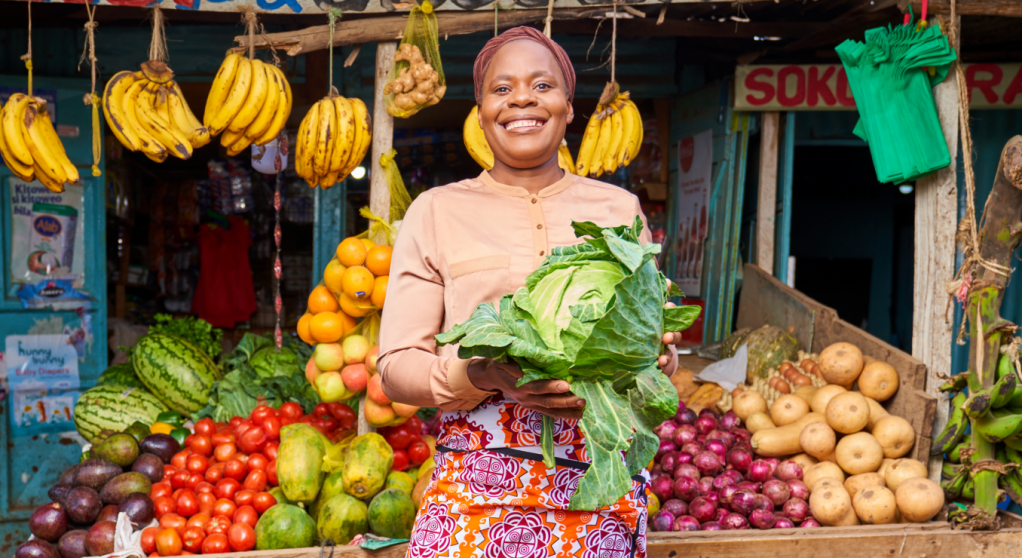Lending plays a critical role in economic development. As the world’s largest financial technology company focused exclusively on the underbanked with nearly 8 million customers served to date, we know this well. In a world where nearly half of the adult population is financially underserved without accessible tools to easily manage their income and spending over time, loans are a powerful mitigator for the global underestimated, who are more vulnerable to market shocks or personal emergencies. Research attests to the immense value of access to capital for small and micro businesses, and thought leaders have long advocated for responsible lending in emerging markets, noting the potential for individuals to use these loans to start their own businesses and improve their financial standings.
Even so, there’s a critical piece of the conversation missing. Much of the research and dialogue devoted to lending and economic development focuses on “productive” lending, defined as loans used for business investments or growth. This can imply that the inverse — ”consumptive” lending — is counter-productive. We argue that this view overlooks the significant role that so-called “consumptive”, or personal loans, can play in building financial stability and enabling growth.
In reality, the financial needs of borrowers in the informal economy can’t so neatly be categorized as “productive” or “consumptive.” In fact, our customers’ productive and consumptive needs are actually intertwined. Our data shows that just 10% of customers borrow solely for consumptive purposes throughout their relationship with Tala; 90% take mixed-use loans as they go through their life. What may be seen as traditionally consumptive spending actually creates the conditions for more productive activities.
Broadening the definition of productive lending to drive financial growth
Consumptive loans refer to loans used for the goods and services that individuals and households buy for everyday use, such as groceries, household bills, and other necessities. When individuals and households have access to credit to make these necessary purchases, it allows them to free up their income for other activities.
Take, for example, our customer May. She is a single mother in the Philippines. As the main earner for her family, she was struggling to make ends meet and used Tala loans to pay her bills and make sure her family had what they needed to survive. Over time, May began using her Tala loan to fund her business, selling local delicacies. With added stability and cash flow, customers like May evolve their loan use. While their loans may begin as what is traditionally labeled “consumptive,” they are critical to developing customers’ financial growth and agency.
According to a sample from a third-party survey we commissioned, 40% of loans from Philippines customers would be considered “productive loans.” Looking closer, however, we found over 50% of these loans would more aptly be categorized as mixed-use for both business and household needs. The remaining “consumptive” loans were used for school fees, medical services, and other essential needs like rent, groceries, and utilities.
Such purchases are often undervalued by researchers who simply distinguish between loans that generate income and those that don’t, thus ignoring the value of indirect outcomes. Liquidity to cover medical expenses means better health and more employable days. Spending on childcare can enable parents, particularly mothers (more on this below), to participate in the labor market, increasing hours, productivity, and earnings. And, at a basic level, the costs of shelter and education prohibit progress toward long-term financial growth. Loans for any of these purposes would be traditionally labeled as consumptive; they’re also entirely necessary.
Unlocking economic opportunities for women
This broader definition of productive loans can have a particularly significant impact on women in emerging markets who are more financially vulnerable and are disproportionately impacted by restrictive loan use than men. Women are less likely to be financially resilient, historically less likely to have access to financial services, and yet often bear the burden of household responsibilities — carrying out at least two and a half times more unpaid household and care work than men, according to the UN. Research has found when women do have access to financial accounts, they tend to spend more than men on food, education, and health care, increasing the welfare and productivity of their families. By providing women with access to necessary loans — including consumptive or mixed-use loans — we’re unlocking their potential.
Increasing financial agency through trust
At Tala, we believe in empowering our customers to put their capital to work to achieve whatever goals matter most to them. With additional liquidity from mixed-used loans, customers are enabled to take control of their financial lives and well-being. Customers like Christine, a single mother in Manila who grew her business and increased her income, or Caroline in Kenya, who grew her e-commerce business and now feels secure in her future. We’ve helped students like Sahari pay for things while she gets her degree.
Ultimately, a more holistic approach to lending and building financial agency for the underbanked is needed across the industry, one that recognizes the interconnectedness of all economic activities and the importance of supporting individuals and households as well as businesses. Lending with a broader understanding of “productive” loans is one step towards this more encompassing approach. It helps individuals and households meet their basic needs while also creating conditions for more productive activities. By expanding access to credit for these purchases, we can help to build a more equitable and sustainable economy, one that benefits everyone, not just those who already have access to traditional financial systems.
